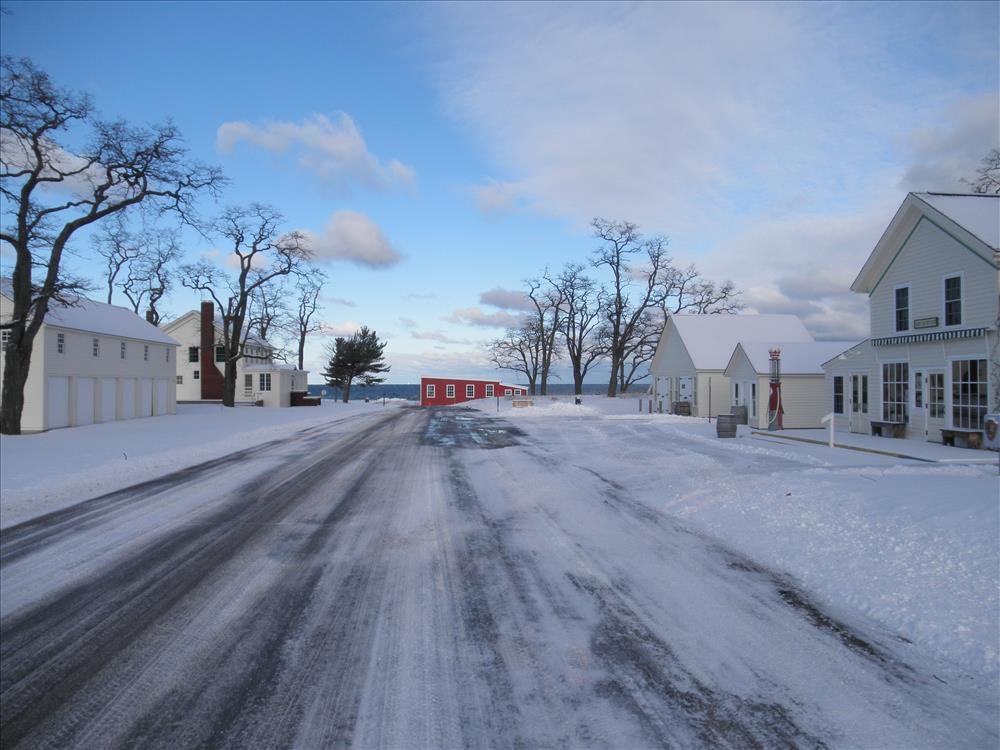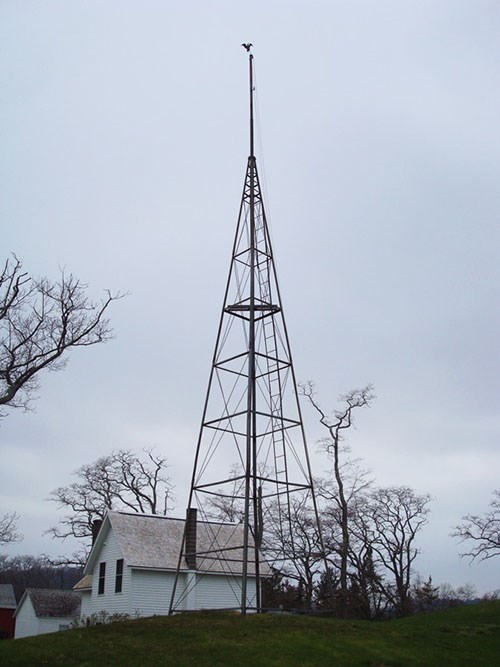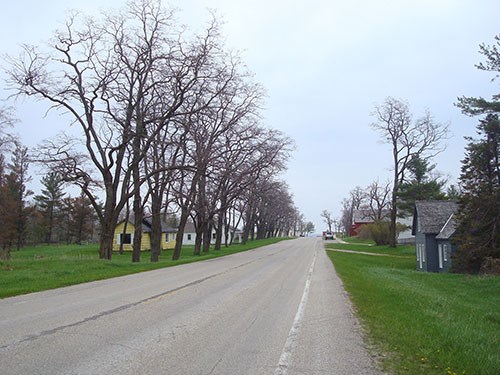Part of a series of articles titled Cultural Landscapes of Sleeping Bear Dunes National Lakeshore.
Article
Glen Haven Village Historic District Landscape

NPS / Kerry Kelly (Friends of Sleeping Bear Dunes)
Landscape Description

NPS / Jackson
A 50 feet tall U.S. Weather Bureau storm signal tower stands between the D.H. Day Store and Day house. Estimated to date to 1914, the tower was once part of the U.S. Lifesaving Service efforts to inform passing ships of weather conditions. The towers typically sat anchored to the dock.
Sleeping Bear Inn and the two-story D. H. Day Store remain extant and contribute to the district’s historic identity. Sleeping Bear Inn, a two-story, L-shaped wood frame building constructed by McCarty ca. 1864, housed business and leisure travelers. During its restoration in 1928, workers enlarged the building and added concrete sidewalks. Construction of the general store roughly coincided with establishment of the inn. In later years, the general store became D.H. Day Store after David Henry Day, Northern Transportation Company agent and later owner of Glen Haven village.
After a decline in cordwood demand, the community opened the Glen Haven Canning Company to maintain the village economy in the mid-1920s. The Canning Company building currently serves as the Cannery Boat Museum. Additional structures include a blacksmith shop constructed of hand-hewn timbers, a generator building, and several residences. A majority of the residential structures consist of one or two stories, clapboard siding, and gable roofs. The uniformity of the residencies creates a simple yet cohesive vernacular style.The Sleeping Bear Inn is the best surviving example of a frontier hotel in the Sleeping Bear Dunes and Leelanau County areas. It served as a home for workers in the area, a stopping off point for settlers before they moved on, and a resort hotel for both summer and winter seasons.

NPS / Jackson
The existing features enable the district to convey its historical identity in the areas of maritime history, transportation, commerce, and outdoor recreation. Glen Haven Historic District was listed on the National Register of Historic Places in 1983 with supplementary documentation added in 1990. Today, visitors can experience the historic district for themselves, including the Cannery Boat Museum and fully-restored general store and blacksmith shop.
Quick Facts
- Cultural Landscape Type: Vernacular
- National Register Significance Level: National
- National Register Significance Criteria: A, B
- Period of Significance: 1864-1931
Maritime history: 1864-1931
Transportation: 1864-1931
Commerce: 1864-1931
Outdoor Recreation: 1920-1931
Transportation: 1864-1931
Commerce: 1864-1931
Outdoor Recreation: 1920-1931
Last updated: December 9, 2019


